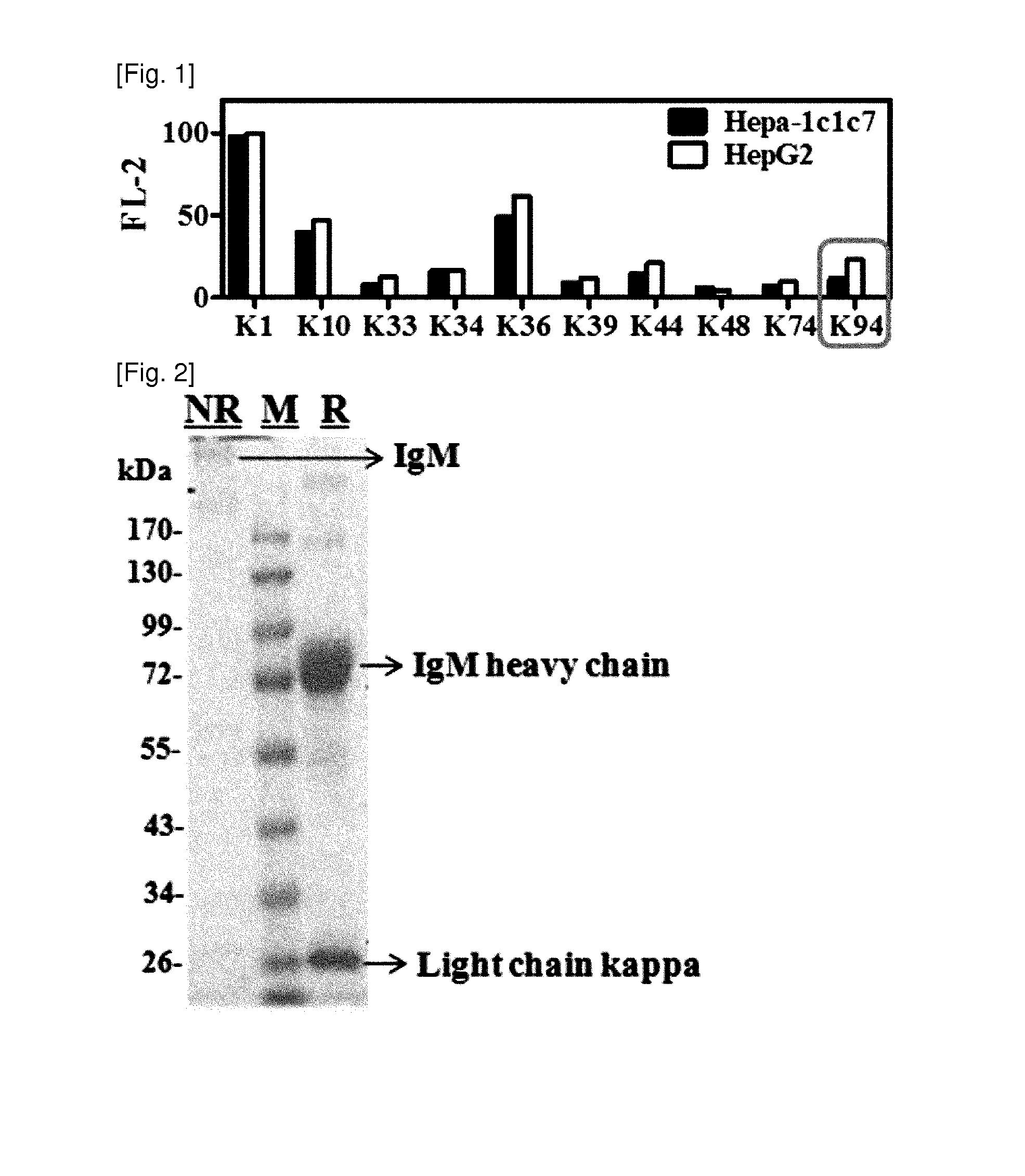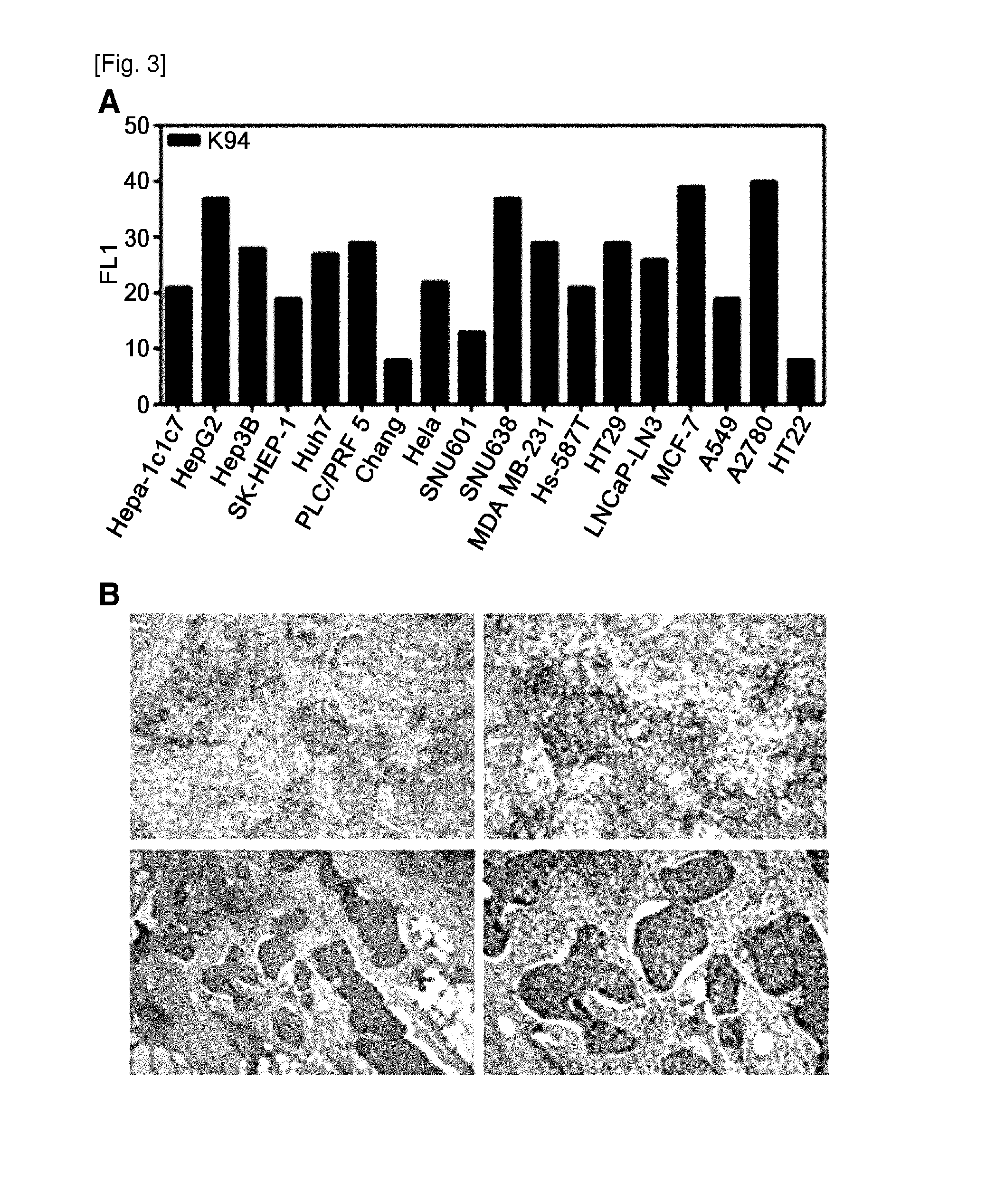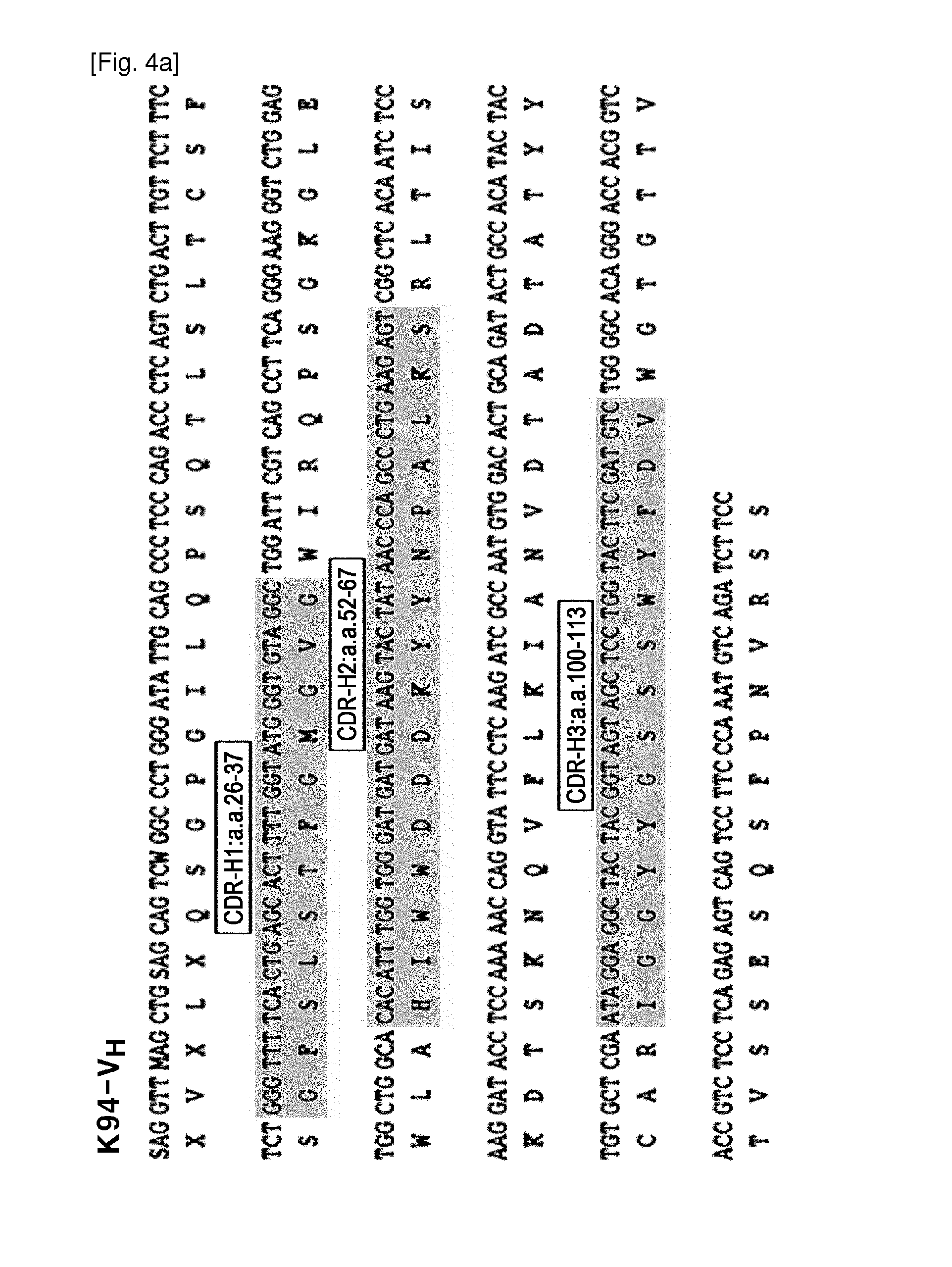Marker comprising Anti-ck8/18 complex autoantibody and its use for diagnosing cancer
a technology of autoantibody and cytokeratin, which is applied in the direction of fused cells, instruments, peptide/protein ingredients, etc., can solve the problems of limited detection accuracy, difficult to detect calcification as an early warning sign of breast cancer, and impose emotional, physical, and economic burdens on patients
- Summary
- Abstract
- Description
- Claims
- Application Information
AI Technical Summary
Benefits of technology
Problems solved by technology
Method used
Image
Examples
example 1
Acquisition of a Group of Autoantibody-Producing Cells and K94 Autoantibody-Producing Cell
[0078]In order to acquire autoantibodies produced during carcinogenesis, an H-ras12V transgenic mouse that was reported to develop liver cancer similar to human liver cancer was utilized. Spleen cells were obtained from H-ras12V transgenic mice with liver cancer as a B cell group, and fused with a mouse myeloma cell Sp2 / 0 to prepare a B cell hybridoma cell line. The cell fusion was performed according to the common B cell hybridoma preparation method. Primary selection of the fused cells was performed using HAT medium (hypoxanthine-aminopterin-thymidine medium), and only clone-forming cells were cultured separately. Among those cultured cells, the cells, in whose culture medium, cancer cell-reactive antibodies were detected were only selected and maintained.
[0079]The reactivity of autoantibodies against cancer cells was examined by flow cytometric analysis of cancer cell line after intracellula...
example 2
Purification of TAB-K94 Monoclonal Antibody
[0082]For the analysis of antigens against TAB-K94 autoantibodies, purified antibodies were required. Cell culture medium obtained by culturing a large amount of TAB-K94 antibody-producing clones or TAB-K94 antibody-producing cells were injected into the peritoneal cavity of mice, thereby acquiring ascites fluid and using it for antibody purification. The generally used isotyping ELISA was used to identify that the type of TAB-K94 antibody was IgM. MBP-agarose (Mannose binding protein immobilized agarose: Pierce) or protein L agarose was used in affinity chromatography for IgM purification. After SDS-electrophoresis, the purified antibodies were examined by coomassie staining, and protein quantification was performed before use (FIG. 2).
example 3
Reactivity of TAB-K94 Antibody Against Cancer Cell Lines and Immunohistochemical Staining of Breast Cancer Tissue
[0083]The reactivity of TAB-K94 autoantibodies against various cancer cell lines was examined by flow cytometric analysis after intracellular staining of various cancer cell lines in the same manner as in Example 1 (FIG. 3A). As a result, expression of TAB-K94 antibody-reactive proteins was noticeably increased in a liver cancer cell line, HepG2 and a breast cancer cell line, MCF-7 (FIG. 3A).
[0084]Based on the reactivity against cancer cells, expression of TAB-K94 antibody-reactive antigen was examined by immunohistostaining of human liver cancer tissues and breast cancer tissues using TAB-K94 antibodies. As a result, no distinct reaction was observed in the liver cancer tissues (data not shown), but a strong staining around cell membrane was observed in the breast cancer tissues, in particular, in the invasive front (FIG. 3B). These results suggest that the TAB-K94 antig...
PUM
| Property | Measurement | Unit |
|---|---|---|
| molecular weight | aaaaa | aaaaa |
| molecular weights | aaaaa | aaaaa |
| molecular weights | aaaaa | aaaaa |
Abstract
Description
Claims
Application Information
 Login to View More
Login to View More - R&D
- Intellectual Property
- Life Sciences
- Materials
- Tech Scout
- Unparalleled Data Quality
- Higher Quality Content
- 60% Fewer Hallucinations
Browse by: Latest US Patents, China's latest patents, Technical Efficacy Thesaurus, Application Domain, Technology Topic, Popular Technical Reports.
© 2025 PatSnap. All rights reserved.Legal|Privacy policy|Modern Slavery Act Transparency Statement|Sitemap|About US| Contact US: help@patsnap.com



